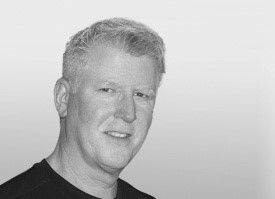Globally renowned lecturer, CDT and CEO of Sculpture Studios laboratory, Lee Culp, spoke with 3Shape about digital dentistry workflows. He talks about what they mean to his business and how they help in combatting today’s pandemic reality.
Lee and his lab have been digital since CAD/CAM was first introduced in dentistry more than twenty years ago. He was one of the pioneers to embrace technology and has seen it grow from a curiosity to a necessity and means to stay ahead of the competition.
Now with the advent of the corona pandemic, being a digital lab has meant even more. Lee says that digital workflows help him to maintain a “clean environment in our lab. Everything we design is done on a computer.”
Digital workflows mean there are no analog impressions being shipped or shared within the laboratory. This eliminates any chance of contamination from the practice to the lab and vice a versa.
Lee says that his lab, “receives approximately 60% of their cases digitally: intraoral scans so there is no disinfectant and no possibility of disease transfer with them.”
While the infection deterrent benefits are readily apparent, technology has also meant much more to Lee and his business. As a lab, you need to produce restorations in the most efficient and predictable manner. They must fit, be esthetically pleasing, and they must be cost efficient to produce.
Digital workflows have enabled Sculpture Studios to reduce remakes down to a little less than .5%. The industry average is 2.5%, a significant difference. Culp says that missed margins, contacts, or occlusion issues are considerably lowered by digital workflows. Digital workflows begin with scan data, which cannot distort, crack, or as mentioned, be contaminated. Design and production are always based on data rather than the eye.
Lee Culp: “Digital has meant that as a CDT, I am joining the process in making teeth much earlier. I consider myself more of a clinical technician today. I do as much treatment planning now as I do in making things.
As a clinical technician, you could say that I do the heavy lifting for the specialists and restorative dentist. Together, the periodontist, oral surgeon, orthodontist, and I build a virtual patient. We are all technicians, using intraoral and CBCT scans, TeamViewer, and software to create digital patients.
My job now has become much more about getting things where they need to be, in terms of the treatment plan, and then the specialists can come in and tweak it.
Because we work together digitally, we do a little bit more of each other’s work. It makes the outcome more predictable. A side note to this is that I see surgeons becoming more interested in the restorative process because digital workflows get them more involved due to its inherently better communications capabilities.”

When asked what he would advise his fellow lab professionals considering CAD/CAM, Lee says, “now is the time to go digital because there are both definitive and objective reasons to look at this technology. It’s not just different, it’s definitely better.”
Lee Culp can be contacted at sculpturestudios.net